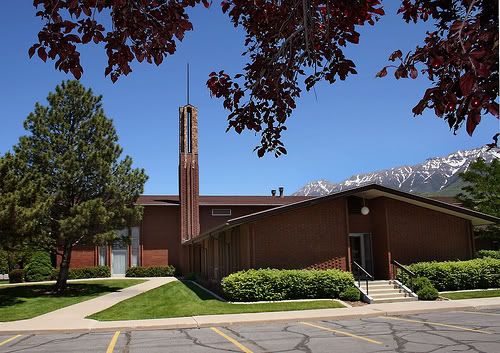Further reorganization occurred during the early 1960s, and in 1972 the Correlation Department was extended to the planning, preparation, translation, printing, and distribution of church materials. The intent of correlation in the Church is as follows:
- Maintaining purity of doctrine.
- Emphasizing the importance of the family and the home.
- Placing all the work of the Church under priesthood direction.
- Establishing proper relationships among the organizations of the Church.
- Achieving unity and order in the Church.
- Ensuring simplicity of Church programs and materials.
Unfortunately, there were some perhaps unintended consequences of Church correlation which have occurred since the early '70's. Here are some of the things that I see as regrettable:
- Curricula and policies which impose a mountain-states U.S. framework on the entire world and is not attuned to actual local circumstances.
- Decreased autonomy in auxiliaries, especially for women. [1]
- Gradual decline in creative endeavors in wards and stakes (musical performances, three act plays, hand work projects, welfare farm work, speech contests, instructional and recreational dances, road shows)
- Suspicion and hostility toward publications not known to be "approved." (women's and auxiliary publications [2], private publications like Dialogue, Sunstone, and most of the books not published by Deseret; extending even to the Journal of Mormon History and BYU Studies).
- Limiting of approved music to be performed in Church meetings, excluding classical sacred music as well as cultural and traditional pieces.
- Loss of creativity, immediacy and interest in lessons and talks, art, architecture and music. [3]
It is comfortable for members in the continental U.S. to be able to visit anywhere in the world and be able to find their way around the church building. I have no doubt I could find the Relief Society room in any chapel in the world. Perhaps it is soothing for some to know that wherever they go, Mormons are hearing the same Sunday School lesson. But, as Claudia Bushman has said concerning correlation,
"I am not convinced that unity is as desirable as some seem to be. Unity requires much squelching of initiative."
Are the advantages of a correlated Church worth having chapels which look like Kentucky Fried Chicken franchises? Are they worth being served a "Big Mac" Sunday School lesson?
____________________________________________
[1] "...curriculum reform paled in significance next to [Harold B. Lee's other goals of reining in the auxiliary organizations and placing day-to-day control of the church in the hands of the Twelve."
"[We] could see the auxiliaries running the Church, as it were. We had no Priesthood board but they had large and talented and powerful Mutual boards and Sunday School boards and Relief Society boards and Primary boards. And they scattered throughout the Church teaching their message, and they were talented people and taught so well that the auxiliaries of the Church were far more effective and powerful in the members idea and view than were the Priesthood quorums. So I would say, to characterize the Church prior to Correlation, that the auxiliaries ran it and everything took second place to them." (A. Theodore Tuttle from an interview of 1977 quoted in David O. McKay and the Rise of Modern Mormonism, by Gregory A Prince, Wm Robert Wright (2005) pp. 155, 143)
[2] see Empowerment and Mormon Women’s Publications by Vella Neil Evans, summarized in a post at FMH.
[3]













The chapel adjacent to the Boston Temple is new, unique and 2 stories. I had no idea where the RS room was. I’d like to know how they rated such a nice building. It probably had something to do with the topography. The Cambridge (Mass) chapel that burned last month was also unique. I hope they don’t replace it with a cookie cutter version. I miss roadshows too. And when our ward RS wanted to have a book club as an enrichment activity, we learned that the Bishop would have to read and approve our selections. So, yeah, we have a book club, and we try to invite the new sisters, but it is not “official”.
ReplyDeleteReading through both OPs - his and hers - you seem to agree more than disagree. I tend to agree. Correlation was a necessary change to address some real issues and some that were probably an overreach, and it has had some good intended consequences, some bad intended consequences, and some bad unintended consequences.
ReplyDeleteSorry - one more comment about Mary's point - priesthood oversight simply drives some things undergound. Examples: out of pocket spending vs. going against the ward budget. If it's not that much money, it's too much hassle to deal with the bureaucracy. Likewise, book clubs and "lunch clubs" that the bishop might not approve (wanting to limit book content or disapproving a lunch club that costs members money at a restaurant) have gone rogue. Shhh. Don't tell.
ReplyDeleteI couldn't agree more, Bored in Vernal.
ReplyDeleteDuring the sixties and early seventies, the Church was really growing. By the late nineties, according to the CUNY Religious Identification Survey, we baptized a lot of people but lost just as many.
The figures of last year's PEW survey on religion show that we are losing five members for four converts.
In my opinion, correlation has a lot to do with that. If you do not adapt to local conditions, Church is less likely to be meaningful.